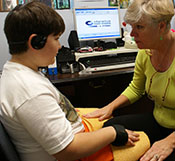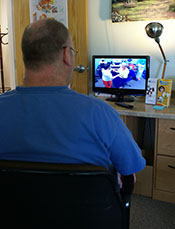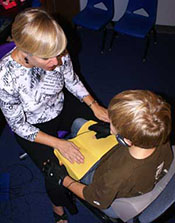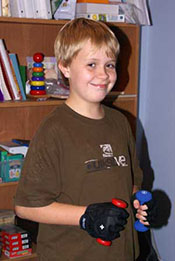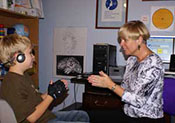Timing, Concentration and Motor Processing Therapy
“For the body does not consist of one limb or organ but of many . . . And the eye is not able to say to the hand, I have no need of you, Nor again the head to the feet, I have no need of you . . . But God has so adjusted . . . harmonized . . . the whole body . . . So that there should be no division or discord or lack of adaptation of the parts of the body to one another . . .”
The Amplified Bible, excerpts from 1st Corinthians 12:14-25
This is a portion of Scripture that is often quoted in reference to the importance of the unity of the human body. I believe that this scripture also holds an important truth that is critical to the remediation of Timing, Concentration and Motor Processing Deficits: the body and all the limbs and organs (including eyes and ears) must be fully “harmonized” or integrated to enable efficient learning. Auditory Processing and Visual Processing are unique skills critical to learning. They can be greatly enhanced through appropriate therapy. However, some individuals are “just slow” or “just uncoordinated” or “just can’t seem to attend for long periods of time.”
In the past, remedial education programs have attempted to improve children’s planning and sequencing capacities through surface-type activities such as writing and following directions. However, new research indicates that improved neural temporal processing, or “improved timing,” can help children focus and attend; plan, sequence, and coordinate actions; as well as a variety of cognitive and language skills, including reading, spelling, and math. How? Modern technology can now develop natural timing down to milliseconds. Interactive Metronome Therapy is a PC-based remediation program based on the traditional music metronome.
The Interactive Metronome training methodology uses a tapping motion of each limb in exact time with a steady beat; the development of precise control of mental functions is the underlying purpose. The physical motions are simple in order to allow the trainee to focus all of his or her efforts on learning how to consistently concentrate without interruption. Initially, the student consciously adjusts their movements to try to get “in synch,” or in “harmony.” However, the ultimate goal is to permanently enhance the individual’s neural timing.
Fifteen one-hour sessions on IM in approximately 5 weeks has been shown to bring about statistically significant improvements in a person’s mental planning and sequencing capabilities. If you are interested in learning if your child would benefit from this remediation program, pull down the Questionnaire and the Checklist and contact us to set up an Auditory & Visual Processing Screening. You can also go to
www.interactivemetronome.com to see the research, the results and a demonstration of the therapy.
THREE LEVELS OF INTERACTIVE METRONOME THERAPY
ADVANCED
Accelerated Advanced IM Training Regimen
Coordination of 13 exercises
Work at subconscious level
Multitasking motor processing tasks with:
~auditory discrimination tasks
~language processing tasks
Sustained attention
Master time down to 20 ms and below
INTERACTIVE METRONOME
Standardized Session IM Training Program
Coordination of the 13 basic exercises
Balance
Concentration without assistance
Develop motor sequencing skills
Establish smooth motor control
Acquire Average Range on the IM Long Form Scale
BASIC
One-on-One Synchronization IM Training Regimen
Coordination of 5 basic movements
Balance
Break gross timing habits
Attention with cueing and modeling
Develop timings into the Average Range
